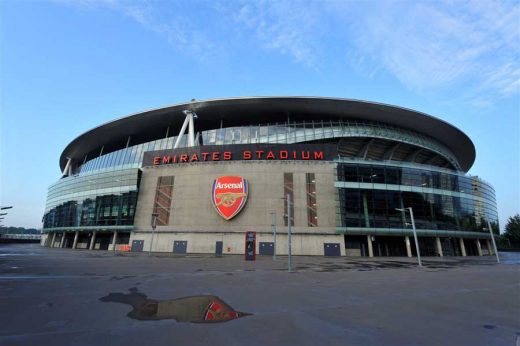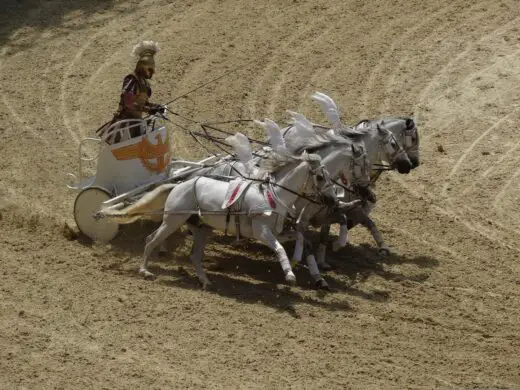Real facts about ancient sports and games guide, Stadiums buildings, Arena architecture structures
Real Facts About Ancient Sports and Games
24 September 2022
Myths About Ancient Sports and Games – Demystified!
Did you know that the ancient Romans played a game called harpastum, which roughly translated means ‘the ball game’? Or that Mesopotamians are believed to have once played a game called Stone Football? Did you also know that Maassee, a Native American ball game, involved the players using their hands and feet to throw the ball through one of three goalposts?
That’s just the tip of the iceberg. Ancient sports and games were much more diverse than we think today. From gladiators in amphitheatres to chariot racing in arenas, there is so much to learn about ancient sports. And given how little we know about them today, it’s no wonder most people think they were as boring as watching paint dry. So if you have ever wondered about these things too… Keep reading!
Roman Chariot Racing
The Roman chariot racing was a very popular sport. It was played in amphitheatres, large open-air arenas, especially during the Roman Empire. The race was usually between four chariots, although there could be as many as ten in some cases. The drivers of the chariots were called ‘spurrers’ and they competed for gold, silver, or even bronze money. The charioteers wore colourful costumes and had brightly coloured shields and whips. The horses were also dressed up with colourful ribbons and bells.
The chariot races were usually held at the end of the day, after all other games. The races were often very long and lasted for many hours. Each race could last for up to 24 hours, the longest being between 5 and 6 days. During the races, the spectators were cheering for their favourite teams. They also threw coins and food at the track. There were also some people who wanted to curse the teams by throwing things at them.
Gladiator Games
Gladiator games were very popular during the Roman Empire. They were staged battles between trained fighters called ‘gladiators’. These battles were often fought in front of large crowds in interactive arenas such as the Colosseum.
The Emperor of Rome, who was usually watching from a special box, was the source of all Gladiator games. The main reason behind organizing these battles was to entertain the people. Gladiator fights were shown in the Colosseum. The audience could see them and cheer for them.
They were broadcast on large screens throughout the Empire. The Emperor of Rome was the source of all Gladiator games. He was the Most Powerful Person in Rome and also the source of all Gladiator games. The main reason behind organizing these battles was to entertain the people. Gladiator fights were shown in the Colosseum. The audience could see them and cheer for them. Now there are online casinos where people can imitate the ancient games, click here to get more.
Greek Wrestling
Wrestling was an ancient sport which was one of the original Olympic events. It was a form of combat in which contestants attempt to throw each other to the ground. The purpose of wrestling was twofold – to pin the opponent to the ground and to be declared the winner by judges. The matches were often brutal, sometimes ending in death. There were two forms of wrestling in the ancient Olympics – ‘freestyle’ and ‘greco-roman’. There was no difference between the two other than the type of grip used. In both, the contestants are not allowed to kick each other or apply any holds below the waist.
Sumo Wrestling
Sumo is a Japanese form of wrestling. It originated as a sport in which two contestants attempt to push each other out of a circular ring or ‘dohyō’. The rules are similar to those of Greco-Roman wrestling. But the technique is different. The main aim of the Sumo wrestler is to throw his opponent out of the ring. A Sumo match is called ‘tourney’. It is a test of strength and technique.
The winner could be determined in a variety of ways, including the number of points. There are two types of Sumo tournaments – ‘honbasho’ and ‘rikkasho’. The ‘honbasho’ is a six-tournament circuit, held annually between October and March. It lasts for 15 days in Tokyo’s Kokugikan. The ‘rikkasho’ is a one-off tournament that is held in September in Tokyo’s Ryogoku Kokugikan. It lasts for five days.
Maassee Ball Game
Maassee was a Native American ball game that was played by the Choctaw tribe. It is believed that the game was first played some time around 1000 AD. In this competition, two teams of between six and 12 players attempted to hit the ball through one of three goalposts. The balls used were made of deerskin, which was very heavy.
The players used their hands and feet to throw the ball. It is believed that the ball game may have been used to teach young men to deal with pain. The ball game was played at a tribal site called ‘southeastern corner of Mississippi’. The site is being preserved by archaeologists who have found many broken balls by digging there. One of the balls was so well-preserved that the marks made by hand and foot could be seen clearly.
AC Milan / Inter Milan New San Siro Stadium, Italy:

image courtesy of architects practice
Real facts about ancient sports and games Conclusion
The ancient sports and games may be very different from the modern ones. They may seem like they are less relevant to our lives. But they are still an important part of our history and culture. And they could also give us some valuable lessons. We can learn a lot about the ancient mindset by studying their sports and games. Many of them have evolved over time. But some of them are still being played in their original forms. And this is what makes them so special.
Comments on this guide to Real facts about ancient sports and games article are welcome.
Football Stadiums
Football Stadium Buildings – Selection:
New Chelsea Football Stadium

image from architect firm
Emirates Stadium, London

photo © Nick Weall
Wembley Stadium, London
Sports Grounds
Football Stadium Buildings – Selection:
Stamford Bridge Chelsea Ground
Sports Venue Building Designs
Comments / photos for the Real facts about ancient sports and games page welcome





